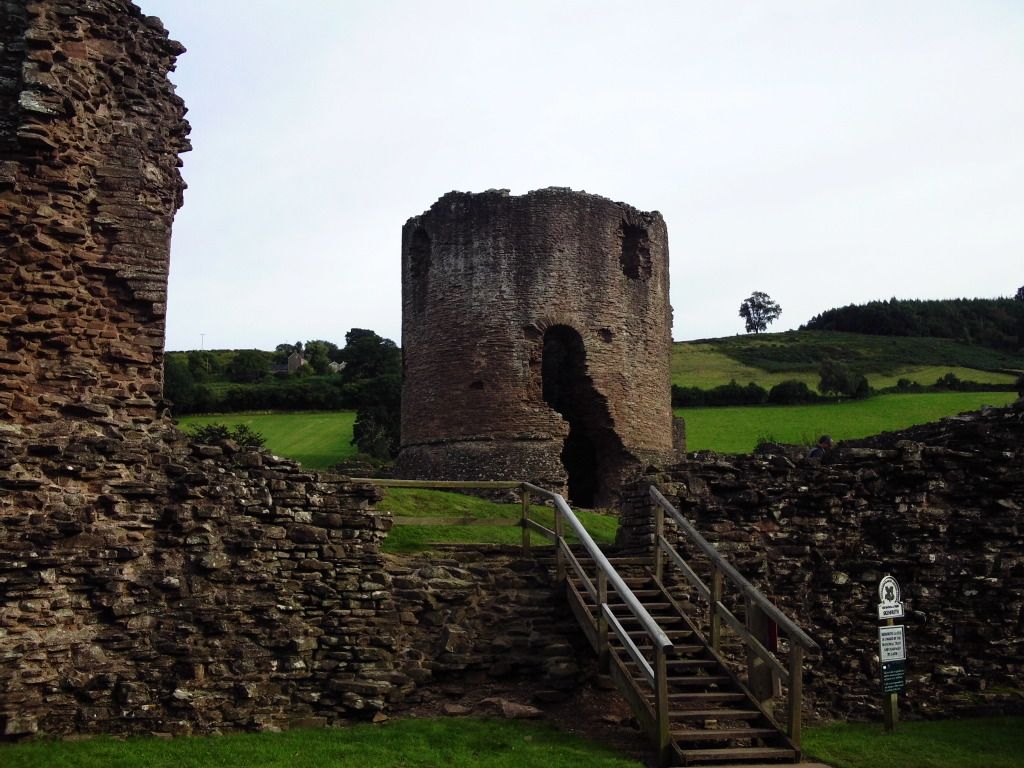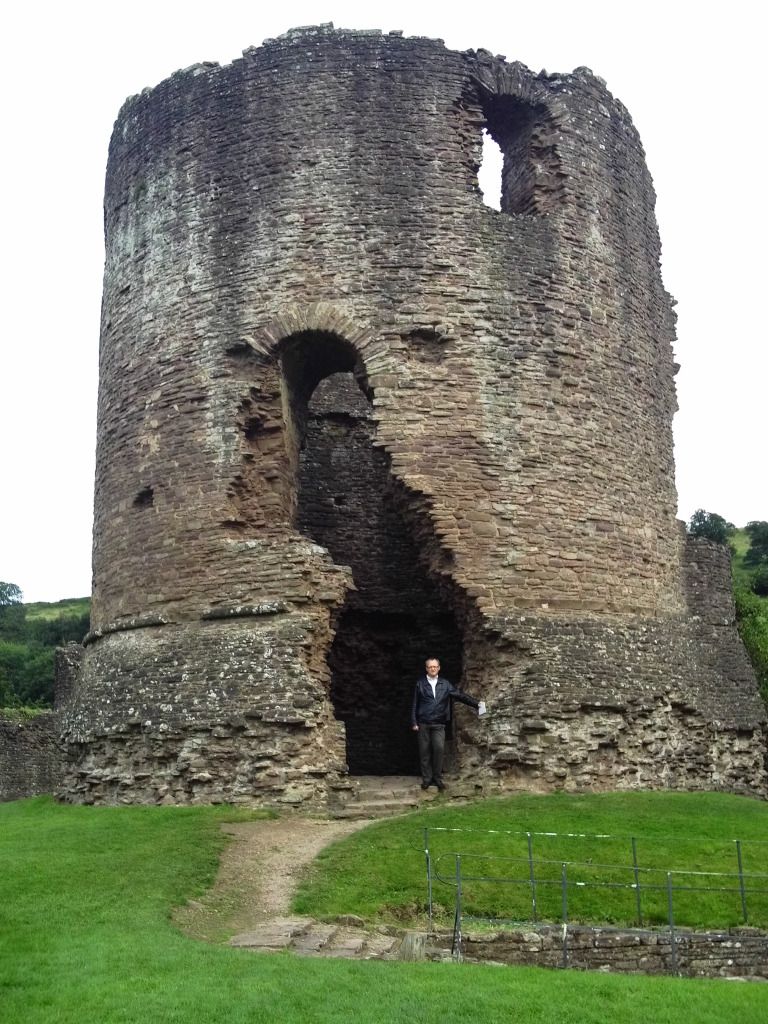 |
| Skenfrith Castle |
The visible remains of the castle were built by Hubert de Burgh between 1219 and 1232, replacing an earlier earth-and-timber version thought to have been built shortly after the Norman conquest. There may even have been a Roman presence on the site as Roman pottery has been found there during excavations.
Hubert de Burgh (1175 - 1243) was a veteran defender of the sieges of the castles at Chinon, Loire, France and Dover (1217). It is thought that he was inspired, as were William Marshall and Walter de Clifford, by castles built be King Philip Augustus as they bear a very strong resemble to a series of castles built by this French monarch. Philip Augustus (1180 - 1223) built no fewer than twenty round great towers, generally between 13.5 and 18m in diameter, all so them had three floors and very few arrow slits. A prime example can still be seen in Villeneuve sur Yonne, Yonne, Northern Burgundy, built between 1204 - 1211.
The plan on Skenfrith also resembles the plan of the Louvre of paris, in that it was a quadrangle with boldly projecting towers with a round donjon (keep). The remains of this castle can see be seen underneath the Louvre museum.
Curtain Wall
Note the four distinct layers of construction
Sally Port
Although very similar to French examples Skenfrith boasts a combination of several design characteristics that are only seen on a very small number of castles, all of them located in Wales. These include Bronllys, Powis built by Walter de Clifford who fought with De Burgh in the Welsh war of 1231 and Pembroke Castle, where the great round tower was built be the famous William Marshall who, not surprisingly, was an ally of Hubert de Burgh.
Three of these distinctive features include:
- First floor entry above a battered base marked by an offset spiral stair to the upper floor,
- Roll mouldings at the external batter,
- Semi-circular projecting turrets.
So if you ever spot one of these features on a castle you too can now bore your partner and/or friends with this useless information :)
Parts of the nearby church, St. Bridget's are contemporary with the castle. It features a quite unusual tower. There are a number of interesting items within the church which are worth to checking out.
If you have an interest in medieval history Skenfrith, Grosmont, White Castle and Monmouth, birthplace of King Henry V, are all worth visiting.
If you have an interest in medieval history Skenfrith, Grosmont, White Castle and Monmouth, birthplace of King Henry V, are all worth visiting.









Brilliant.
ReplyDeleteWe once went on a summer holiday and my Dad took me all round just about every castle in North Wales!!
Salad days.....
Darrell.
Looks like a you had a lovely trip and yes, I'd love to go. Right now however, I'm stuck in the States until my husband has his final surgery. There are not castles or history here and it's a sad thing.
ReplyDeleteIt would be nice to visit these someday. Thanks for info.
ReplyDeleteChristopher
Great post Matt, very interesting!
ReplyDeleteThanks for the comments, as always.
ReplyDelete@Darrell - I believe Wales has the highest concentration of castles in the world. North Wales has all the famous classic Edwardian castles but there are some jems in the south just like Skenfrith.
@Anne - There are a few castles, well, early forts at least in America. The oldest masonry fort(17th C), Castillo de San Marcos, is located at St Augustine, Florida. The town had previously been attacked by good old Sir Francis Drake - told you I was a castle anorak.
I love medieval buildings and this one is very nice!
ReplyDeleteMaybe next year the family will have a trip in UK, I just hope that we will not stay all the time in London and other towns!
I love the landscapes of the British Islands and can't imagine a travel without them!
Thanks for posting - I miss visiting Britain's castles...
ReplyDelete